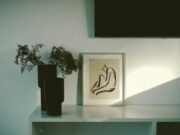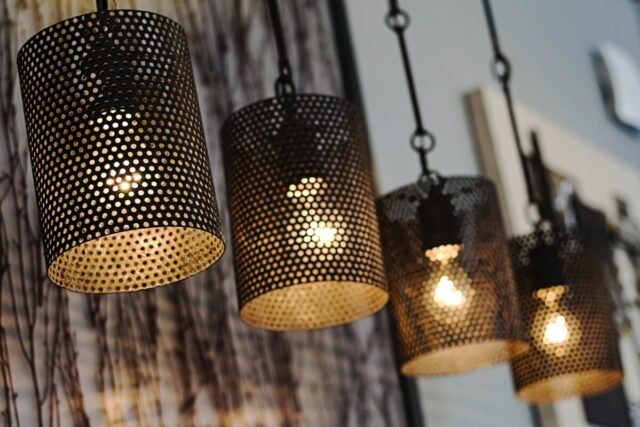Installing a new light fixture can seem like a daunting task, but with the right tools, materials, and safety precautions, it can be a straightforward DIY project. Proper light fixture installation not only illuminates your space, but also adds style and value to your home. This comprehensive guide will walk you through the entire process of replacing or installing a new light fixture, from gathering supplies to mounting and wiring the fixture. With these tips and steps, you’ll be able to hang a light fixture and light up any room with confidence.
Gather the Essential Tools and Materials
Before starting any electrical project, it’s important to have the proper tools and materials on hand. Attempting to install a light fixture without the right equipment can lead to mistakes, injury, or damage. Here are the must-have tools and supplies for a safe and successful light fixture installation:
Tools:
- Screwdrivers: Flat head and Phillips head screwdrivers in various sizes to remove old mounting screws and connect wires.
- Pliers: Both standard and needle nose pliers to grab, twist, and cut wires.
- Wire strippers: To strip away the plastic insulation coating on wires.
- Voltage tester: To confirm power is off to the circuit before working.
- Ladder: A sturdy ladder or step stool to reach the ceiling junction box.
- Safety glasses: For eye protection while working with electrical parts.
Materials:
- New light fixture: Carefully inspect new light fixture prior to installation. Ensure it is compatible with your junction box.
- Mounting hardware: Screws, anchors, brackets specific to your new light fixture for mounting.
- Wire nuts: To connect exposed wires by twisting them together.
- Electrical tape: Used to insulate wires and connections.
- Bulbs: Applicable bulbs for the new light fixture. Check manufacturer guidelines.
Gathering these DIY light fixture installation essentials before getting started will make the process smoother and safer. Always check local regulations before attempting any home electrical work.
Shut Off Power to the Circuit
Once you have all your tools and materials prepped, it’s time to take the crucial first step – turning off power to the circuit. Working on a light fixture while the power is still on can result in electrocution. Here are the proper steps to cut power:
- Locate the circuit breaker panel: Typically located in the basement, garage, or laundry room. The panel box will be clearly labeled.
- Identify the correct circuit: Circuit breakers should have labels indicating which room or outlet they control. If unlabeled, turn off circuits one by one to identify.
- Switch the circuit breaker to OFF: The switch should clearly move from ON to OFF. Double check it is the correct circuit.
- Test that power is off: Use a voltage tester or multimeter to confirm the power is off at the light fixture before moving forward.
Ensuring the circuit is dead and cannot electrocute you while working is the most crucial safety step in any electrical DIY project. Never take shortcuts when it comes to shutting off power.
Remove the Existing Light Fixture
If you are replacing an existing light fixture, it will need to be fully removed prior to installing the new one. Here are the steps:
- Disconnect wires: There will be wires connected to the existing light fixture. Carefully disconnect and unwrap them.
- Unscrew mounting screws: Use a screwdriver to remove any screws securing the fixture to the ceiling junction box.
- Carefully remove fixture: Once unsecured, gently maneuver the light fixture down from the ceiling. Take care not to tug wires.
- Inspect wires and junction box: Examine the exposed wires from the ceiling for any damage. Check that the junction box is securely attached.
- Dispose/recycle fixture: Make sure to properly dispose of or recycle the old light fixture at an approved facility. Do not simply throw in household trash.
Working slowly and methodically will allow you to remove the old fixture without leaving loose wires or damaging the junction box. Your space should now be ready for the new light.
Prepare for New Light Fixture Installation
With the old fixture removed, inspecting the junction box and prepping the wires are key steps before installation. This will ensure compatibility and a smooth wiring process.
- Inspect junction box: Make sure the junction box is securely fastened to a ceiling joist and shows no damage. It must be able to hold the weight of the new fixture.
- Reinforce if needed: If the junction box is loose or unsuitable, you may need to replace it or add bracing prior to installation.
- Gather and prep wires: Have the junction box wires ready. Strip away 1/2 inch of insulation from wire ends using wire strippers.
- Check compatibility: Ensure the new light fixture will work with your junction box in regard to wiring, size, and mounting.
Taking these preparatory steps will facilitate connecting the wires and mounting the new fixture properly. Pay close attention to the junction box condition to avoid issues down the line.
Connect the Wires
Connecting the new light fixture wires to the junction box wires is a crucial step. Proper wiring ensures the fixture functions safely and as intended. Follow these guidelines closely:
- Match wire colors: The black (hot), white (neutral), and green or copper (ground) wires must connect to their respective matching wire.
- Twist wires together: Twist the like-colored wires together clockwise using pliers. Apply wire nuts over the twisted ends and tighten securely.
- Insulate connections: Wrap electrical tape around the wire nuts and connections to prevent exposed wire.
- Tuck wires into box: Arrange the connected wires neatly into the junction box to clear room for mounting the fixture.
- Double check: Confirm the wires are matched correctly and the connections are very secure. Loose wires can cause electrical issues.
Adhering to proper electrical wiring standards is paramount. If you are unsure about working with electrical wires, consult an electrician before proceeding. Take your time connecting the wires correctly.
Mount the New Light Fixture
Once the electrical connections are made safely, it’s time to mount the new light fixture to the ceiling. Follow all manufacturer instructions for proper mounting:
- Align fixture: Carefully lift the new fixture up to the ceiling, guiding the mounting bracket holes to align with the junction box screw holes.
- Insert mounting screws: Insert the mounting screws through the bracket holes and into the pre-drilled junction box holes.
- Secure screws: Use a screwdriver to tighten the mounting screws until the fixture bracket is flush to the ceiling. Do not over tighten.
- Check stability: Verify that the light fixture is mounted securely and is stable. It should not wobble or shift when touched.
- Adjust position if needed: If the fixture is not straight, slowly loosen the screws and adjust to the desired angle before re-tightening.
Taking care to properly mount the light fixture will ensure it remains fixed and stable for the long term. Avoid putting strain on the wiring connections when lifting the fixture into place.
Install Bulbs and Test the Light
You’re almost done! The final steps are to install the light bulbs and restore power to test for proper operation:
- Review bulb requirements: Check the fixture specs and manufacturer guidelines for compatible bulb shapes, sizes, and wattages.
- Insert bulbs: Screw bulbs into their sockets securely. Take care not to touch the bulbs with bare hands to avoid fingerprints and residue.
- Restore power: Turn the circuit breaker back ON at the panel box. Use a voltage tester to confirm it is live.
- Test the light: Turn on the light switch. Ensure the new fixture and all bulbs are working correctly.
- Adjust if needed: Make any adjustments to the light direction. Most fixtures have swivels and hinges to angle the light properly.
When the new light fixture illuminates correctly, the hard work is done! Install a bulb shield if included. Reference the manual for any special instructions.
Conclusion
While the process may seem complicated, installing a new light fixture is very manageable as a DIY project. The keys are having the right tools and materials, following safety procedures, properly wiring connections, and adhering to the manufacturer’s instructions. Taking the time to correctly install a fixture will provide beautiful, functional lighting for years to come. Always exercise caution when working with electrical systems and consult an electrician if any issues arise. With the helpful information in this guide, you can confidently light up any space in your home with a stunning new fixture.































